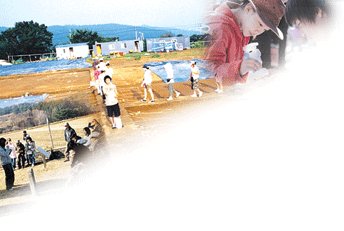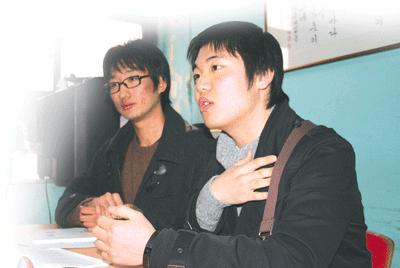사학과 학회 ‘탑상연구회’ 인터뷰

‘사학과 소모임에서 왜 불교미술을 연구하는가’라는 물음에 그들은 우리나라 문화재 중 약 70%는 불교 문화재라는 말을 먼저 꺼낸다. “대부분의 학생들에게는 불교 미술이 생소하게 느껴지겠지만 불교 미술을 공부함으로써 한국 고대사 또한 알 수 있다”고 김성주 기초분과장이 덧붙였다. 그는 본래 역사를 배우고 싶어 사학과에 진학했고 불교 미술에 대해서는 잘 알지 못했다고 한다. 하지만 학회 활동을 하며 전과 달리 문화재를 보는 눈을 가지게 돼 그 매력에 푹 빠졌다고.
매주 월요일 모여서 연구를 진행하는 탑상연구회는 기초분과에서 기본적인 지식을 쌓은 뒤 연구분과에서는 관심 있는 분야를 선택해 심층적인 공부를 하고 있다. 이렇게 학기 중에 차곡차곡 쌓인 지식은 매년 방학 중 여름·겨울 답사에서 빛을 발하는데, 이 답사는 가히 ‘탑상연구회의 꽃’이라 칭할만 하다. 그들의 답사는 직접 지도를 보고 길을 찾으며 히치하이킹으로 장소를 이동하는 것이 여느 답사와는 다른 점이라고. 이에 류상우 고문은 “다들 히치하이킹이 어렵다고 생각하는데 열심히 부탁드리면 대부분 태워주세요”라고 말하며 웃는다.

학과차원의 답사는 대부분 특별한 사전지식 없이도 이해하기 쉬운 유적지로 가는 경우가 많다. 하지만 이들은 답사를 ‘숨은 문화재 찾기’라고 부를 정도로 깊숙이 숨어있는 우리 문화재를 찾아 대화를 나누고 문화재의 소중함을 실감하고 돌아온다. 묻혀있던 가치를 연구하고 찾아내는 그들에게서 옛것이 주는 가치를 쉽게 잊어가는 우리들의 모습을 다시 한 번 되돌아보는 것은 어떨까.

